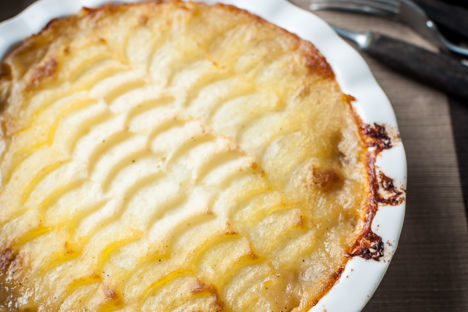When it comes to the perfect mashed potato recipe, it’s all down to flavour. For many, texture is also key - some like robust, roughly mashed potatoes, some like fluffy or whipped, while others like theirs to resemble baby food or purée.
Another dilemma: floury or waxy potatoes? The received wisdom is that floury or fluffy varieties such as Maris Piper or King Edward are the best spuds for the job, although the Potato Council suggests the smooth Desiree for velvety mash. Chefs tend to opt for waxy types, which absorb flavour - in the right hands this kind of mashed potato can be elevated to Michelin standard, but doesn’t result in the home-cooked comfort food most of us know and love.
On top of this, the question remains - what do add, and how much? Butter is usually used, but others swear by milk, cream, buttermilk, stock or cheese. Should you flavour your mash or leave it unadulterated? Mashed potato can be enhanced by salt, pepper, herbs, garlic or mustard, to name but a few.
There really is no right way to make mashed potato – what is delectable for one person is anathema to another. However, there are a few tips you can adhere to in order to ensure yours doesn’t turn into a gloopy, sticky paste.
Method
Variations
Try adding different flavours to lift up your mash, horseradish and mustard work particularly well. For a richer mash add more butter or even cheese. Daniel Clifford uses Reblochon cheese in his pomme puree.
Uses
Mash potato is a fantastic accompaniment to any meal, either as a side dish or on top of a pie. Try Adam Byatt's Beef and onion cottage pie or Simon Hulstone's Fish pie with warm tartare suace.
Get in touch
Please sign in or register to send a comment to Great British Chefs.



